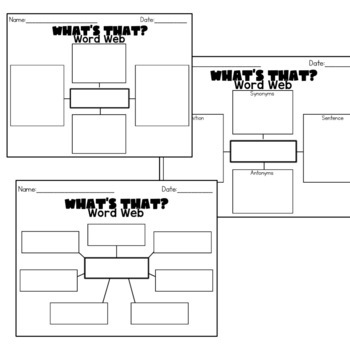In the vibrant world of education, the quest for engaging and multifaceted learning experiences continues to evolve. Enter “What’s That? Wednesday,” a resource that invites educators to stimulate their students’ curiosity and expand their vocabulary through interactive morning meetings. This initiative not only piques interest but also enhances critical thinking and collaborative skills. The following are innovative activities utilizing the “What’s That? Wednesday” resources, offering educators an opportunity to infuse their lesson plans with creativity and engagement.
1. Opening Inquiry: The Vocabulary Showcase
Kick off the morning meeting with a display of a unique image from the “What’s That? Wednesday” collection. This act serves as a visual stimulus and prompts students to engage in an inquiry-based discussion. Encourage learners to predict the content of the image, fostering a culture of curiosity. Here, divergent thinking unfolds as students generate diverse hypotheses about what they observe. By articulating their thoughts, students practice using descriptive language, drawing connections with their existing vocabulary while honing their observational skills. An open-ended question such as “What can you infer from this picture?” propels the discourse further, facilitating cognitive engagement.
2. Collaborative Word Webs
Following the inquiry discussion, students can embark on an exciting group activity: creating word webs. Starting with a central vocabulary word derived from the morning image, students can collectively brainstorm related terms. This exercise not only promotes teamwork but also cultivates a rich understanding of semantic relationships. As students incorporate terms encompassing synonyms, antonyms, and extended vocabulary, they grapple with the language intricacies. This interactive method underlines the interconnectedness of language, illustrating how words can be woven together into a tapestry of meaning.
3. Creative Storytelling with Visual Prompts
Harnessing the power of imagination, educators should consider implementing a storytelling session where students craft tales inspired by the visuals presented. Here, the image serves as a prompt, guiding students to sculpt narratives that include descriptive language and newly acquired vocabulary. By allowing students to explore different genres—be it fiction, fantasy, or even historical narratives—they develop their storytelling abilities while simultaneously expanding their lexical repertoire. This activity also encourages auditory skills as students share their stories aloud, reinforcing retention through verbal expression.
4. Vocabulary Charades
For a more kinetic learning experience, integrate a game of vocabulary charades. In this activity, students select a vocabulary word garnered from the morning image or the previously created word web. Without uttering a single word, the student must communicate the meaning through gestures and movements, while peers endeavor to guess the word. This experiential learning moment bridges physical movement and intellectual engagement, creating a dynamic environment that reinforces understanding of vocabulary through physical embodiment. The echoes of laughter and excitement will encapsulate the classroom, creating an atmosphere ripe for learning.
5. Reflective Journaling
After a lively series of activities, it is paramount to allow students to synthesize their learnings through reflective journaling. Encourage them to articulate their thoughts about the vocabulary words explored, the stories told, or the games played. This self-reflective exercise not only solidifies the day’s learning but also cultivates metacognitive skills as they evaluate their understanding of the vocabulary. Prompts like “What new words did you learn, and how might they be useful in your life?” can guide their reflections, providing depth to their writing experience.
6. Semantic Mapping for Deeper Understanding
Diving deeper into vocabulary, educators can implement semantic mapping as a follow-up activity to the morning meeting. Through this technique, students visually represent word relationships and extend their vocabulary comprehension further. By mapping out words like “magnificent,” students might branch out into synonyms such as “splendid,” “glorious,” and “grand,” while also noting antonyms like “diminutive” or “mediocre.” This method not only bolsters their vocabulary but also empowers students to observe nuances in word meanings and applications.
7. Interactive Word Games
To conclude the session, infuse some energy with interactive word games inspired by the vocabulary explored. Games like “Vocabulary Bingo” or “Pictionary” can serve as both a review and reinforcement of the new terms learned. As students actively engage in these games, they inadvertently facilitate language acquisition in a fun and memorable manner. The light-hearted competition invigorates the classroom dynamic, making vocabulary exploration enjoyable and less intimidating.
In summary, “What’s That? Wednesday” resources provide a foundation for pedagogically sound activities that can elevate morning meetings into vibrant hubs of exploration, creativity, and camaraderie. Through a diverse array of approaches that include inquiry, collaboration, storytelling, and interactive games, educators have the opportunity to craft an enriching learning environment that resonates with students long beyond the classroom. By embracing these innovative practices, the pursuit of knowledge becomes not only an educational endeavor but also an enriching journey into the realms of language and meaning.









Leave a Comment